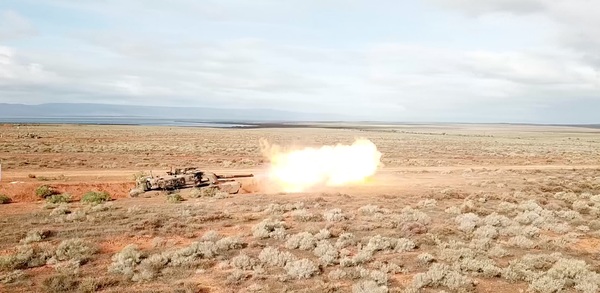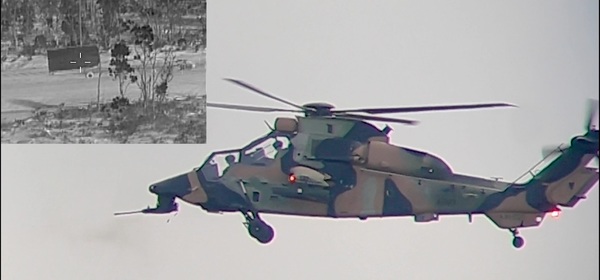Tanks, missile launchers and even attack helicopters have taken aim at a Geelong-designed target system that recently won a more than $1 million defence contract.
“You name it – it’s shot at it,” said Michael Fielding, who led a Deakin University backed-team designing the system.
“Hundreds, if not thousands, of rounds have fired at it during its development and testing.”
At the end of 2017, soldiers shot two high-explosive anti-tank (HEAT) Javelin missiles at a target attached to the system.
“The target was written off but the rest was fine,” Dr Fielding said.
The federal government recently awarded a contract for the team to supply six RAIDER Mobile Moving Target Systems to the Australian Army.
The robot-driven target system mimics armoured vehicles, including tanks, reaches 40km/h and can generate a heat signature for weapons such as the Javelin, which use thermal targeting.
“As the targeting systems for weapons platforms become more advanced, the targets need to be too,” Dr Fielding said.
Unlike previous targets, the RAIDER could create scenarios for soldiers limited only by a commander’s imagination and the terrain, he said.
“If you’re talking a vehicle-style target, that’s where the RAIDER really stands out amongst the crowd.”
Previously, vehicle-style targets were either static or moved on a fixed path, making them repetitive and easily predictable for soldiers, Dr Fielding explained.
But, using a guide line, commanders could set up new paths for the RAIDER each time, training soldiers to be more adaptive and deadlier, he said.
M1 Abrams tank cannons, heavy machine guns and even attack helicopters had fired at the target during 18 months of development from concept to commercial reality.
The system consisted of an expendable target, a trailer and, by far the most expensive component, an electric-powered mover, Dr Fielding said.
“(During trials) we gained an understanding of what would be a practical distance to separate the mover from the target,” he said.
“At the end of the day, you don’t want to be blowing up the high value component when you shoot.”
Although the mover did survive a hit from a heavy machine gun and even a “dust up” from the 30mm nose cannon of a Tiger attack chopper, Dr Fielding said.
“They’ve been wounded but still able to be repaired to full working order with relatively little effort.”
The trailer was attached to the top of the mover, allowing it to suddenly reverse and rapidly change the direction of the target without jack-knifing, Dr Fielding said.
“The way that our system turns is quite unique – we hadn’t seen that done before.”
The system’s ease of use also set it apart, he said.
“From cracking open the shipping container to having a moving target ready to be engaged, it takes two hours.
“That greatly increases the number of suitable areas where the system can be set up.”
After first pitching the design and receiving funding in 2016, the team had supplied six of the RAIDER systems to the army.
The recent contract brings the total number to 12 and Dr Fielding hoped to eventually market the system to Australia’s military allies.
“We’re looking to expand the number of systems available,” he said.
The RAIDER was just the latest project in the team’s long-running collaboration with the army on various target systems, Dr Fielding explained.
“There’s been a host of training systems we’ve developed over the years that have supported predominantly the army,” he said.
“It’s been a long concerted effort by a lot of people to make this commercially viable.”
For Dr Fielding, 38, that collaboration began after he moved to Geelong to study robotic engineering at Deakin University.
In the mid-2000s he saw materials damaged by improvised explosive devices (IED) from wars in the Middle East.
“As someone who hasn’t needed to be exposed to the pointy end of it … it gave me an insight on some the challenges the soldiers are facing,” he said.









